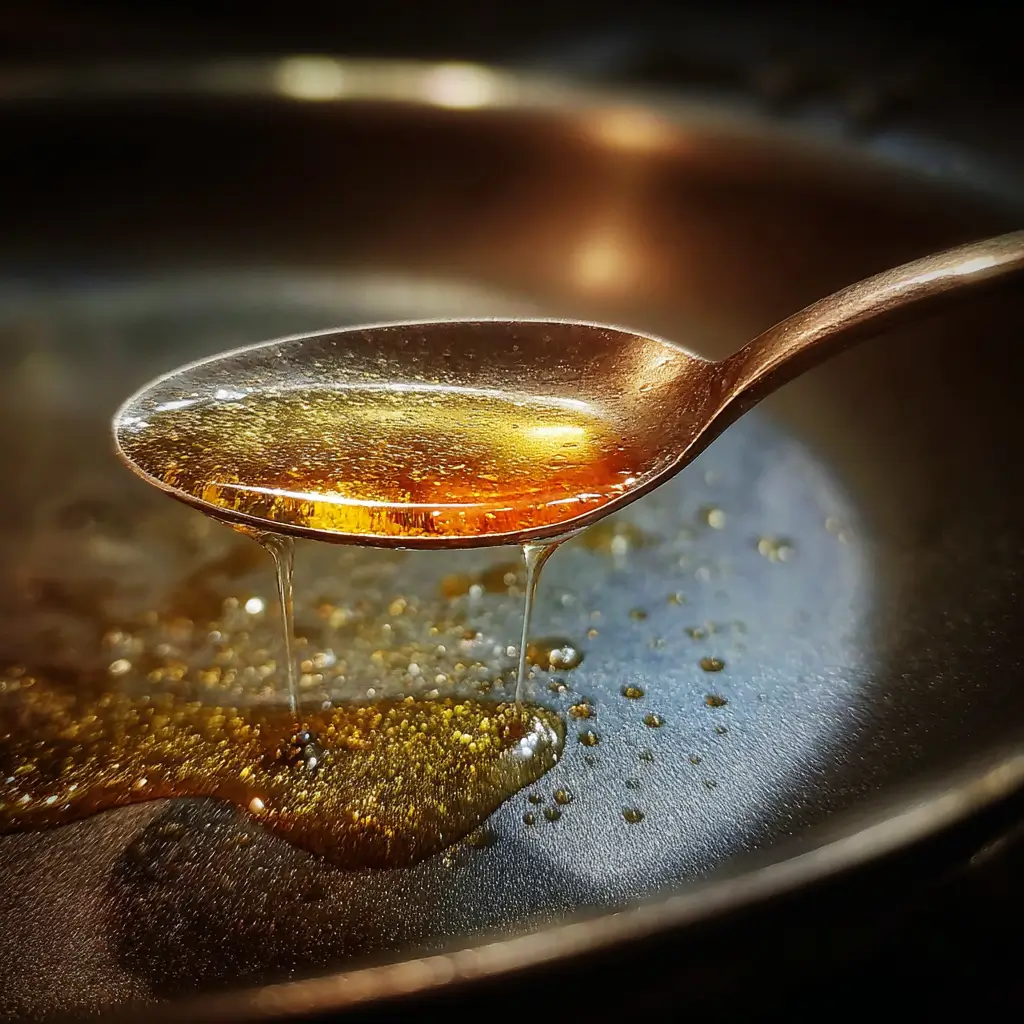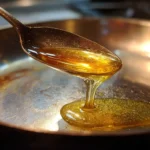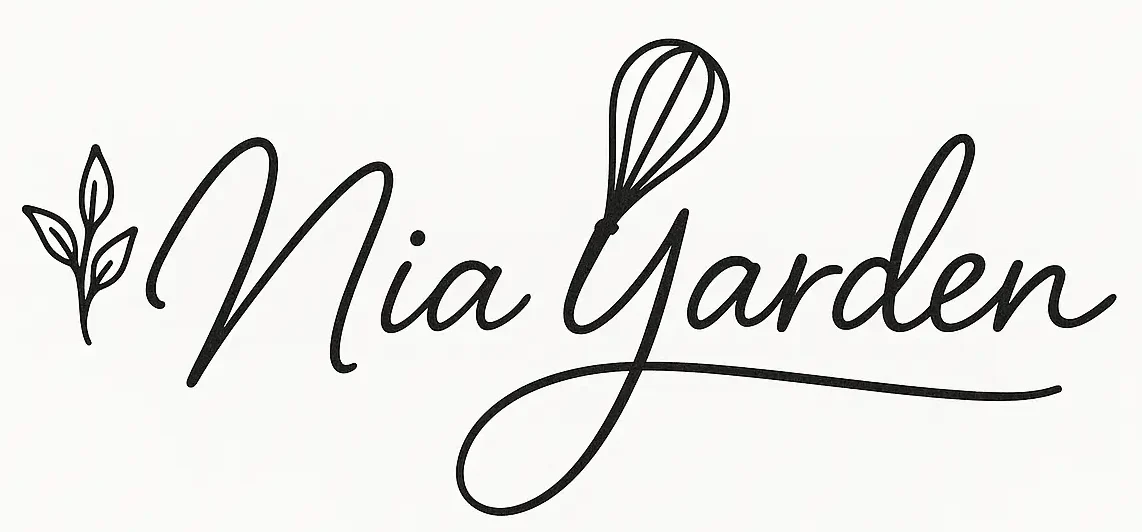If you’re following a dairy-free diet, chances are you’ve asked yourself, “Is ghee dairy free?” You’re not alone. Ghee has become a popular ingredient in health-conscious cooking, paleo diets, and even lactose-free meal plans. But because it originates from butter, people with dairy allergies or intolerances often question whether it’s safe or suitable.
So, is ghee dairy free in a practical sense? That depends on how sensitive you are to lactose or casein, and how the ghee is processed. In this article, we’ll explore what ghee really is, how it’s made, and whether it contains traces of dairy. You’ll also learn how it compares to other dairy products, what experts and real people have experienced when consuming ghee with dairy sensitivities, and when to avoid it altogether.
We’ll dig deep into whether ghee causes inflammation like other dairy products, and examine its role in gut health. By the end, you’ll have the clarity to decide if ghee belongs in your dairy-free lifestyle.
- Check out our guide to dairy-free indulgence: Dairy-Free Ice Cream Cake
Table of Contents
Is Ghee Dairy Free? Understanding Its Role in a Dairy-Free Lifestyle
Learn how to make clarified ghee at home—a rich, lactose-free butter alternative perfect for dairy-free diets. Easy, quick, and great for gut health.
- Prep Time: 5 minutes
- Cook Time: 10 minutes
- Total Time: 15 minutes
- Yield: 1 cup 1x
- Category: Basics, Pantry Staple
- Method: Stovetop
- Cuisine: Indian, Global
- Diet: Gluten Free
Ingredients
1 cup unsalted butter (preferably grass-fed)
Instructions
In a small saucepan over low heat, melt the butter slowly.
Let it simmer until it starts to bubble and foam forms at the top.
Continue simmering for 8–10 minutes. The milk solids will sink, and the butterfat will turn golden and clear.
Skim the foam from the top and carefully pour the clear butterfat into a glass jar through a fine mesh strainer or cheesecloth.
Discard the milk solids at the bottom.
Notes
Store in an airtight container at room temperature for up to a month.
Use in place of regular butter in high-heat cooking or for a dairy-sensitive diet.
Ensure all milk solids are removed for people with dairy allergies.
Nutrition
- Serving Size: 1 tbsp
- Calories: 120
- Sugar: 0g
- Sodium: 1mg
- Fat: 14g
- Saturated Fat: 9g
- Unsaturated Fat: 5g
- Trans Fat: 0g
- Carbohydrates: 0g
- Fiber: 0g
- Protein: 0g
- Cholesterol: 35mg
What Is Ghee and How Is It Made?
How Ghee Differs From Butter
To truly answer “is ghee dairy free,” you need to understand what makes it different from butter. Ghee begins its life as regular butter, but it’s transformed through slow heating. This method removes milk solids—specifically lactose and casein—which are the primary culprits behind dairy allergies and intolerances.
While butter contains water, proteins, and dairy sugars, ghee is clarified butter that has been stripped of these extras. That’s why many people on dairy-free or low-lactose diets turn to ghee as a go-to cooking fat. It has a nutty aroma, a longer shelf life, and a much higher smoke point than regular butter.
Traditional Ghee-Making Process
So how exactly is ghee made? Traditionally, ghee is created by simmering unsalted butter over low heat. During this process:
- Water evaporates, leaving behind pure fat and milk solids.
- Milk proteins separate, forming foam on top or sinking to the bottom.
- Butterfat is strained, resulting in a clear, golden oil-like liquid.
This removes most of the dairy content, making it technically lactose-free in many cases. But keep in mind, trace amounts of milk proteins may still remain, depending on how thoroughly it was processed. That’s why if you have a severe dairy allergy, it’s still important to ask: “Is ghee dairy free enough for me?”
Don’t miss our picks for lactose-friendly desserts: Dairy-Free Ice Cream
Does Ghee Contain Dairy or Lactose?
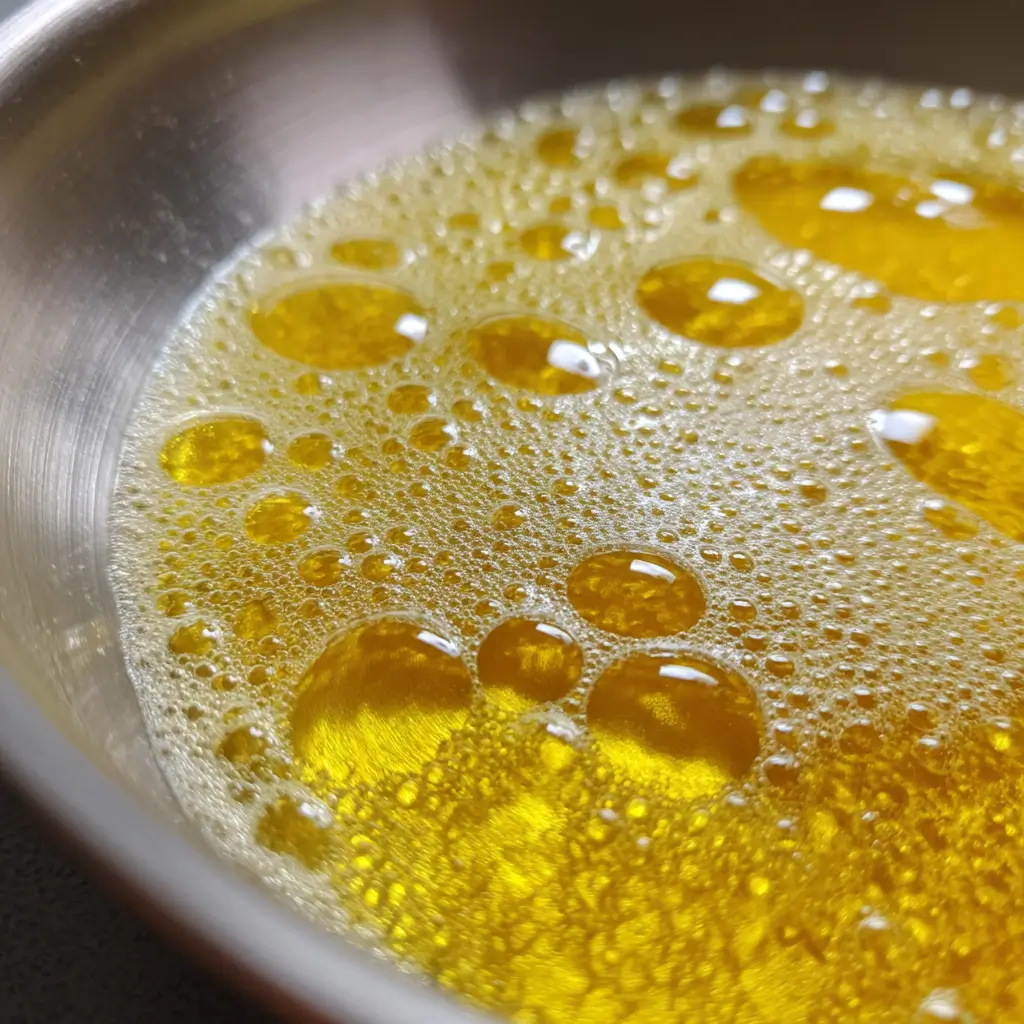
Breaking Down Lactose and Casein in Ghee
Let’s get one thing straight—is ghee dairy free from a scientific standpoint? Ghee is made from butter, which is a dairy product. However, what makes ghee different is how it’s processed. During the slow simmering process, most of the milk solids—including lactose (milk sugar) and casein (milk protein)—are removed.
But does that make ghee completely dairy-free? Not necessarily. While ghee is often labeled as lactose-free, it can still contain trace amounts of dairy proteins. This is especially important for those with severe dairy allergies. For people who are only lactose intolerant, ghee is usually tolerated well because it contains almost no lactose.
Ghee is best described as low in lactose and casein, rather than 100% dairy-free. That’s why it’s often included in paleo, keto, and Whole30 meal plans—but those with allergies should remain cautious.
Is Ghee Considered Dairy-Free?
The answer to “is ghee dairy free” really depends on how you define “dairy-free.” From a culinary and dietary perspective, many consider ghee suitable for dairy-free cooking because it doesn’t contain significant amounts of lactose or casein. However, from a regulatory or allergen perspective, it’s not truly dairy-free because it originates from butter.
To break it down:
| Category | Is Ghee Considered Dairy-Free? |
|---|---|
| Vegan Diet | ❌ No – It’s animal-derived |
| Lactose-Free Diet | ✅ Yes – Almost no lactose |
| Dairy Allergy (Severe) | ⚠️ Maybe – Risk of trace dairy |
| Paleo/Whole30/Keto | ✅ Yes – Widely accepted |
So if you’re asking is ghee dairy free because of a mild intolerance, ghee may work perfectly fine. But for those with life-threatening allergies, it’s best to consult a healthcare provider and consider certified lactose-free butter alternatives.
Learn more about dairy alternatives: is Vegan Dairy Free?
Can People with Dairy Allergies Eat Ghee?
Real Experiences: What Allergy Sufferers Say
If you’re wondering is ghee dairy free enough for someone with a dairy allergy, the answer isn’t black and white. Many people with mild dairy sensitivities or lactose intolerance find that ghee causes no symptoms at all. That’s because during the ghee-making process, the majority of dairy proteins are removed.
Take Sarah M., a health blogger from Oregon, who suffers from a mild casein allergy. She shared,
“I’ve been using grass-fed ghee for over two years and never had a reaction. My digestion improved, my skin got clearer, and I finally had a cooking fat I could trust.”
However, this is not the case for everyone. Michael D., a 35-year-old with a severe dairy allergy, noted that even small traces of milk protein in ghee triggered his immune response:
“I tried ghee that was labeled lactose-free, but it still caused itching and bloating. My allergist confirmed it contained residual casein.”
These varied responses highlight the fact that ghee is not guaranteed safe for everyone with a dairy allergy. It’s important to pay attention to your body’s reaction and, if in doubt, speak with a healthcare provider before including ghee in your meals.
Discover great ideas like high-protein options: Dairy-Free Protein Shakes
Risks vs. Benefits for Dairy Allergy
When considering ghee for a dairy-free lifestyle, especially with allergies, you need to weigh the potential benefits against the risks:
Benefits of Ghee for Mild Sensitivities:
- Nearly lactose-free and casein-free
- Easier on digestion
- Rich in butyrate, which supports gut health
Risks for Severe Dairy Allergies:
- May still contain trace milk proteins
- Cross-contamination during commercial processing
- Allergic reactions, including inflammation, skin rashes, or digestive issues
For anyone who suspects even minor dairy sensitivity, it’s smart to try small amounts of high-quality, certified ghee and observe the effects. Always choose ghee brands that test for allergen levels and clearly label their products.
So while ghee may be tolerated by some with dairy intolerance, it’s not a universally safe product for all. When in doubt, consult your allergist and don’t gamble with your health.
Ghee vs Other Dairy Products
How Ghee Compares with Butter, Cream, and Cheese
To better understand the answer to “is ghee dairy free,” it helps to compare it with other common dairy products. Ghee starts off as butter, but thanks to the clarification process, it stands apart in several important ways.
Here’s a quick comparison:
| Product | Contains Lactose | Contains Casein | Suitable for Dairy-Free? |
|---|---|---|---|
| Butter | ✅ Yes | ✅ Yes | ❌ No |
| Cream | ✅ High | ✅ High | ❌ No |
| Cheese | ✅ Varies | ✅ High | ❌ No |
| Milk | ✅ Very High | ✅ Very High | ❌ No |
| Ghee | ⚠️ Trace (Low) | ⚠️ Trace (Low) | ✅ Sometimes |
Unlike milk, cheese, or cream, ghee goes through a process that removes most of the dairy solids. This makes it an option for people who can’t tolerate butter or milk but want a flavorful cooking fat. However, because ghee originates from dairy, it still doesn’t qualify as vegan.
In contrast, cheese and cream are loaded with lactose and casein, making them totally off-limits for anyone with dairy sensitivities. Even butter, often seen as relatively mild, contains enough lactose to trigger symptoms in sensitive individuals.
Ghee’s unique composition makes it the least reactive of all these, but again—not 100% safe for everyone.
Check out another common question we get asked: Is Sherbet Dairy Free?
Why Ghee Is Tolerated Better by Some with Sensitivities
So why do some people with dairy issues do just fine with ghee?
Here’s why:
- Ghee is nearly lactose- and casein-free.
- The heating process breaks down or separates the milk solids.
- It contains healthy fats like conjugated linoleic acid (CLA) and butyrate, which support the gut and reduce inflammation.
This combination of factors makes ghee less likely to cause digestive or allergic reactions. In fact, many people who follow an autoimmune protocol (AIP) or paleo diet swear by ghee as their go-to fat.
Still, it’s always wise to start with a small serving, observe how your body reacts, and opt for high-quality, grass-fed ghee to minimize risk.
Ghee and Inflammation
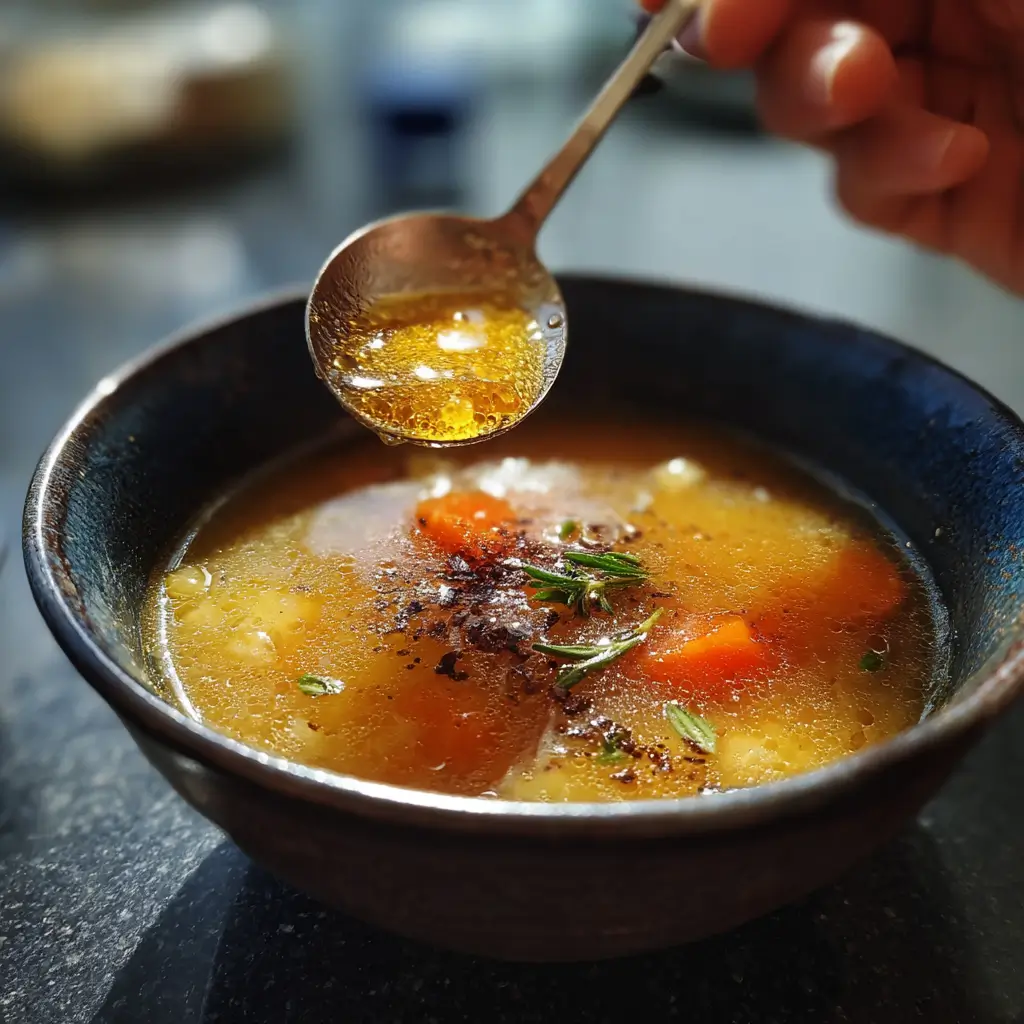
Does Ghee Cause or Reduce Inflammation?
For anyone wondering “is ghee dairy free and anti-inflammatory?”—you’ll be glad to know that ghee has a long-standing reputation in Ayurvedic medicine for its healing properties, especially when it comes to inflammation.
Unlike many processed dairy products that contain inflammatory compounds like casein and lactose, high-quality ghee is almost entirely free from these substances. In fact, ghee contains butyrate, a short-chain fatty acid that plays a key role in reducing gut inflammation and supporting intestinal health.
Several studies and anecdotal reports suggest that ghee may:
- Help reduce intestinal inflammation
- Promote healthy digestion
- Support immune balance in the gut
Because of these benefits, ghee is often included in anti-inflammatory diets and protocols like the Paleo and AIP (Autoimmune Protocol) diets.
However, if your body reacts strongly to trace dairy proteins, even ghee could still pose a problem. That’s why the answer to “is ghee dairy free enough to reduce inflammation” is yes for many, but not all.
Learn more about how ghee compares with common coffee creamers: Dairy-Free Coffee Creamer
Personal Accounts of Using Ghee for Gut Health
Let’s hear it from real people.
Lindsay W., a nutrition coach in Florida who battled IBS, shares:
“Switching to ghee instead of coconut oil changed everything for me. I felt less bloated, more energetic, and my gut felt calmer. It was like the missing puzzle piece.”
Jason T., diagnosed with ulcerative colitis, echoes this:
“At first, I avoided ghee because I thought it was just clarified butter. But after reading more, I gave it a try. Within weeks, my flare-ups reduced. I only use organic, grass-fed ghee, and it’s made a noticeable difference.”
Still, not everyone has a positive outcome. A few individuals report minor bloating or digestive sensitivity when trying ghee, especially if they already react strongly to even trace amounts of dairy proteins.
This reinforces the importance of individual testing—start small, go slow, and track your body’s response.
Potential Downsides of Ghee
When Ghee Might Be a Bad Choice
Despite its many benefits, ghee isn’t for everyone. While many people ask “is ghee dairy free” in hopes of a green light, there are important situations where ghee might not be the right fit.
Let’s explore some common downsides:
- Residual Dairy Proteins – Ghee may still contain trace amounts of lactose or casein, especially if it’s not made with rigorous filtering. For individuals with severe dairy allergies, this small amount can lead to reactions like itching, bloating, or rashes.
- High Saturated Fat Content – Ghee is rich in saturated fats, and while these fats aren’t inherently bad, excess intake may raise LDL cholesterol levels in some individuals. This makes it a poor choice for people managing heart disease or high cholesterol unless used in moderation.
- Overconsumption Risk – Because ghee is so flavorful and easy to cook with, it’s tempting to use more than necessary. A tablespoon of ghee contains about 120 calories and 14g of fat, so if you’re watching your calorie intake, it’s worth being mindful of portion sizes.
- Not Vegan-Friendly – Ghee is animal-derived, which means it’s not an option for those following a vegan lifestyle—even if it’s technically “lactose-free.”
Check out more indulgent options in our frozen guide: Dairy-Free Coffee Ice Cream
Ghee and Heart Health: Is It Really Safe?
One controversial issue surrounding ghee is its effect on heart health. Some studies suggest that ghee—especially when made from grass-fed butter—may raise good HDL cholesterol. Others caution that it can still increase LDL cholesterol, contributing to cardiovascular risk.
Here’s what you need to know:
- Ghee contains conjugated linoleic acid (CLA), which may support fat loss and metabolism.
- It’s rich in butyrate, which can support immune function.
- However, overuse may impact heart health negatively due to high saturated fat levels.
As always, moderation is key. Ghee can be part of a healthy, lactose-free or low-dairy diet, but it should be balanced with other healthy fats like olive oil, avocados, or nuts.
Best Alternatives to Ghee for Dairy-Free Diets
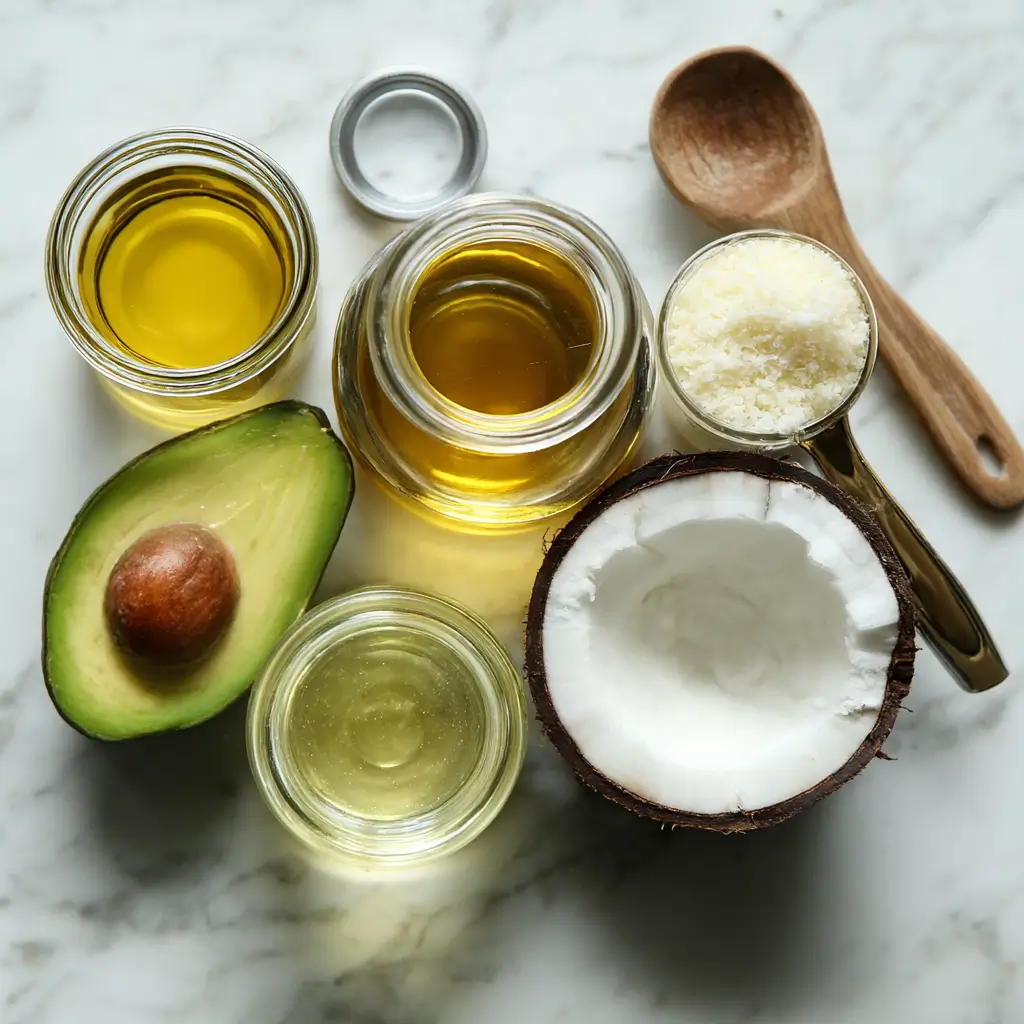
Top Dairy-Free Cooking Fats
So, what if the answer to “is ghee dairy free” is ultimately “not enough” for your body or diet plan? Fortunately, there are plenty of dairy-free cooking fats that serve as excellent alternatives to ghee—some even surpassing it in specific health benefits or flavor.
Here are the top substitutes:
| Alternative | Dairy-Free | Smoke Point | Best For |
|---|---|---|---|
| Coconut Oil | ✅ Yes | 350°F | Baking, sautéing, curries |
| Avocado Oil | ✅ Yes | 520°F | Grilling, frying, dressings |
| Olive Oil (Extra Virgin) | ✅ Yes | 375°F | Low-heat cooking, dressings |
| Vegan Butter | ✅ Yes | 350°F | Spreads, baking |
| Sunflower Oil | ✅ Yes | 450°F | Frying, high-heat sautéing |
| Nut Oils (Almond, Walnut) | ✅ Yes | 320–400°F | Finishing oil, salads |
Each of these oils offers unique health benefits—for instance, avocado oil is rich in monounsaturated fats and has the highest smoke point, while olive oil is antioxidant-rich and heart-healthy. These choices are especially helpful for individuals who are vegan, allergic to dairy, or strictly lactose-free.
Don’t miss our roundup of freezer-friendly treats: Dairy-Free Ice Cream
When to Avoid Ghee Altogether
Despite its clarified nature, ghee isn’t for everyone. If you’re dealing with any of the following, it’s best to opt for a guaranteed dairy-free fat:
- Diagnosed dairy allergy (IgE-based)
- Anaphylaxis history due to milk proteins
- Following a strict vegan diet
- Religious or ethical avoidance of animal products
- You’re unsure of how your body will react
In these cases, it’s smarter—and safer—to stick with oils that are plant-based and certified dairy-free. This avoids confusion over is ghee dairy free and protects against allergic reactions or dietary slip-ups.
Also, when shopping, look for the “certified vegan” or “non-dairy” label to be certain you’re getting a safe product.
Is Ghee OK During Allergies or Intolerances?
What Experts and Dietitians Say
So far, we’ve answered the big question—is ghee dairy free—from multiple angles. But what about eating it during an active allergy flare-up or digestive intolerance episode?
Nutritionists and allergists generally advise caution. Even though ghee contains only trace levels of lactose and casein, that trace may be enough to trigger symptoms in those with high dairy sensitivity or during periods of gut inflammation.
Registered dietitian Hannah Graves, RDN, says:
“Ghee is typically well-tolerated by individuals with lactose intolerance. However, I do not recommend it for patients with a dairy allergy unless it’s tested and verified by their allergist. During flare-ups or heightened sensitivities, even trace dairy can be problematic.”
On the flip side, dietitians who work with paleo and gut-healing clients often include ghee because of its gut-friendly components like butyrate and medium-chain fatty acids (MCFAs). These compounds help soothe the digestive lining and support gut microbiota.
In essence, whether you can consume ghee during an allergy depends on the type and severity of your reaction, as well as the quality of the ghee used.
Looking for freezer-safe, allergy-friendly options? Don’t miss our Dairy-Free Coffee Ice Cream
Can Ghee Trigger Allergy Symptoms?
While ghee is often tolerated by those with lactose intolerance, it’s a different story for those with casein or whey allergies. These allergies are often immune-based, meaning even the tiniest exposure can provoke:
- Itching or hives
- Bloating or digestive upset
- Congestion or sinus pressure
- Fatigue or “brain fog”
- In severe cases, anaphylaxis
If you’ve experienced any of these symptoms after consuming dairy—even in small amounts—it’s critical to talk to your allergist before incorporating ghee into your meals.
And here’s the thing: not all ghee is made the same. Some commercial ghees are more thoroughly filtered than others, while homemade ghee may leave behind more milk solids. Look for products labeled as:
- 100% lactose- and casein-free
- Third-party tested
- Grass-fed and organic
When dealing with active allergy phases, it’s usually safest to remove ghee temporarily and focus on plant-based fats until symptoms subside.
How Ghee Fits into a Dairy-Free Lifestyle
Label Reading Tips for Ghee and Dairy-Free Products
You might still be asking yourself, “Is ghee dairy free enough for my lifestyle?” The answer often lies on the label. Many ghee products in stores today include claims like “lactose-free” or “casein-free”, but those aren’t regulated terms unless verified by third-party testing.
When shopping for ghee and other dairy-free products, keep these tips in mind:
- Look for allergen disclaimers – Read the fine print for notes like “may contain traces of milk.”
- Check the ingredient list – The only ingredient should be “butter” or “clarified butter.” Avoid anything with milk solids.
- Watch for certifications – Some ghees are labeled as paleo-friendly, Whole30 approved, or certified lactose-free.
- Avoid generic or low-cost brands – These may skip extra filtering steps that remove trace proteins.
Also, don’t assume a product is dairy-free just because it’s labeled “non-dairy.” That term often only refers to lactose, not casein, and could still cause issues for dairy-allergic individuals.
Looking for more frozen alternatives? Try our popular Dairy-Free Ice Cream Cake
Incorporating Ghee into a Lactose-Free or Paleo Diet
Many people on lactose-free, low-dairy, or Paleo diets successfully use ghee as a staple. It’s prized for its:
- High smoke point – Perfect for sautéing and roasting
- Flavor depth – Adds rich, nutty notes to vegetables, meats, and grains
- Digestive benefits – Butyrate helps nourish gut lining
- Shelf stability – No refrigeration required
Here are a few simple ways to add ghee to your dairy-free routine:
- Use it to sauté vegetables like zucchini, kale, or mushrooms
- Stir it into rice or quinoa for a nutty twist
- Drizzle it over roasted sweet potatoes or baked salmon
- Whisk it into dairy-free bone broth for added richness
- Replace butter in baking recipes with equal parts ghee
However, if you’re strictly avoiding all dairy or following a vegan lifestyle, then it’s best to stick to plant-based oils. In those cases, ghee simply won’t qualify.
For most people with lactose intolerance or mild dairy sensitivity, high-quality ghee can be a beneficial and flavorful fat to include—just check the label and listen to your body.
FAQ
Is ghee safe for dairy allergy?
It depends on the severity of the allergy. While many people with lactose intolerance can safely consume ghee, those with dairy allergies—especially to casein or whey—should be cautious. Ghee is made from butter and can retain trace milk proteins, which may trigger allergic reactions in highly sensitive individuals. If your allergy is mild, you may tolerate certified lactose- and casein-free ghee, but always consult an allergist before including it in your diet.
Is ghee inflammatory like dairy?
Unlike many dairy products, ghee is typically anti-inflammatory for most people. It contains butyrate, a fatty acid known to support gut health and reduce inflammation in the digestive tract. While milk and cheese often cause inflammation due to casein and lactose, high-quality ghee is nearly free from both. That said, people who are extremely sensitive may still react to trace proteins in some brands of ghee.
Can we eat ghee during an allergy?
During a flare-up or active allergy, it’s best to avoid ghee—even if you’ve tolerated it in the past. Your immune system is on high alert, and even small traces of casein or lactose can cause reactions. Experts recommend pausing ghee use during sensitive periods and reintroducing it cautiously later, only with medical supervision if a true allergy exists.
Is ghee good for gut inflammation?
Yes, many experts and real users find that ghee helps reduce gut inflammation, thanks to butyrate, a fatty acid known to nourish the lining of the intestines. People with IBS, IBD, and leaky gut often report less bloating and better digestion after switching from butter to ghee. Just make sure the ghee is high quality, and monitor your personal response.
Conclusion: Final Verdict – Is Ghee Dairy Free for Everyone?
So, is ghee dairy free? The most accurate answer is: partially. Ghee is a unique form of clarified butter that undergoes a slow heating process to remove most of its lactose and casein, the primary troublemakers for people with dairy sensitivities. This makes ghee a viable option for many on a lactose-free, Paleo, or low-dairy lifestyle.
However, it’s not a one-size-fits-all solution. For individuals with severe dairy allergies, ghee can still carry risks due to trace dairy proteins. And because it’s derived from an animal product, it doesn’t qualify as vegan or strictly dairy-free under most regulatory definitions.
If you’re simply lactose intolerant, high-quality, grass-fed ghee may offer a flavorful, nutrient-rich fat that supports digestion and gut health. But if you have immune-triggered dairy reactions, it’s best to skip it in favor of 100% plant-based oils.
In the end, always listen to your body, read your labels carefully, and if needed, talk to your healthcare provider before introducing ghee into your routine. It’s not just about asking “is ghee dairy free?”—it’s about finding what’s safe and beneficial for you.
Check out another common question we get asked: Is Sherbet Dairy Free?
👉 Follow us for more dairy-free lifestyle tips and recipes:
Pinterest: NYTrecipe
Facebook: NYTrecipes
